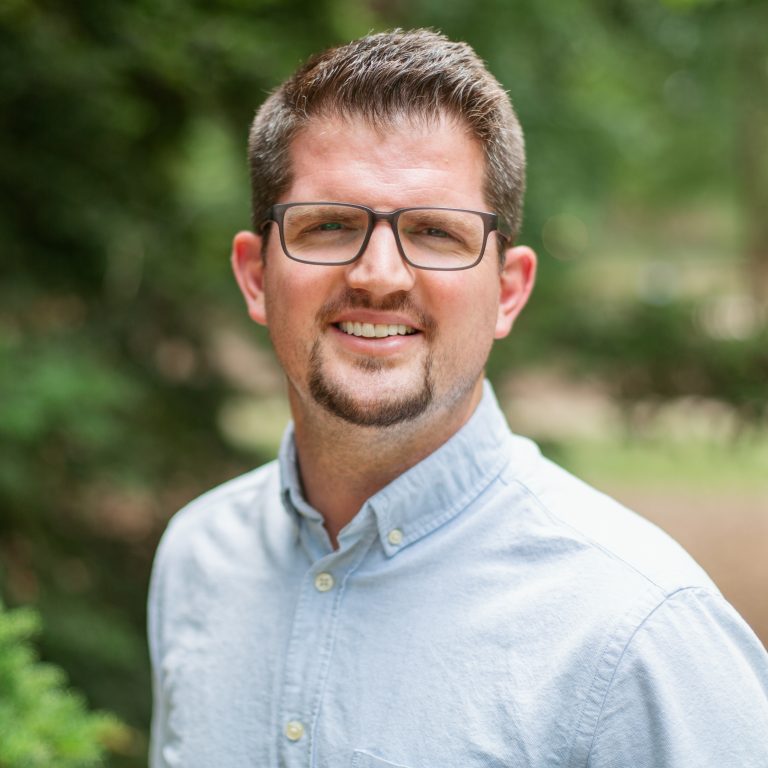Faculty Spotlight: Assistant Professor Gorham Bird

Not only is Gorham Bird a faculty member in the School of Architecture, Planning and Landscape Architecture (APLA), but he is also an alumnus. “My education at Auburn exposed me to the breadth of architecture, design and history, from the smallest scale of how materials join together to the enormous scale of how the fabric of a city is shaped by its buildings,” he stated. Bird, who began teaching in APLA in 2019 and was promoted to Assistant Professor last fall, is happy to be passing on the lessons he learned here as a student.
Bird graduated from Auburn in 2012 with a Bachelor of Architecture and a Bachelor of Interior Architecture. He cites a study abroad semester in Rome and the work he did in the Interior Architecture program as some of the most formative experiences of his academic career. “Many of the projects we worked on were adaptive reuse of existing buildings,” he stated. “This developed my interest and passion and lead me to specialize in the field of architectural conservation and historic preservation.” Bird also earned a Master of Science in Architecture from the University of Michigan, studying adaptive reuse in Detroit, Michigan, and completing a comparative study of historic preservation practices in the U.S. and Europe during a semester in Paris.
Licensed as an architect in Alabama, Georgia and Michigan, Bird worked for Houser Walker Architecture in Atlanta, first as a Project Designer and then as Project Architect, where he focused on adaptive reuse and historic conservation and renovation. “My professional practice experience in Atlanta was incredibly rewarding and exposed me the many facets of architectural practice from day one,” he said. “I was able to work closely with clients, engage as a valued member of the design team, develop phased design solutions for complex renovations in historic buildings and oversee the construction of many of the projects I helped design.” Bird worked on projects for a wide range of clients, from the U.S. District Courts and the U.S. Court of Appeals to several colleges and state universities. At Auburn, he was involved with the renovations of historic buildings like Mary Martin Hall, Comer Hall and Duncan Hall. “Rooted in all these projects was the value of good design, developing solutions to complex problems and delivering a successful project for the client,” he stated.
Bird currently teaches second year architecture design studio as well as the building technology courses Environmental Controls and Materials and Methods of Construction. He enjoys teaching second year students because it’s an exciting and formative time in their education. “Students are learning for the first time about the history of architecture, how architecture engages with or impacts the environment and ecologies of a site and the structure of materials and construction,” he said. “It’s an honor to bring students through the year and to see them grow, develop as designers and synthesize their course work in design projects.” He also teaches a Critical Conservation seminar where students can directly engage and assist with Bird’s active research projects.
And when it comes to his active research projects, Bird has many. With his interests in historic preservation and critical conservation of the built environment, Bird has been able to put his talents to use with an interdisciplinary team of faculty members. He works with several colleagues from the College of Architecture Design and Construction (CADC), including Richard Burt, Junshan Liu and Hunter McGonagill of Building Science, as well as Keith Hébert and Elijah Gaddis of the College of Liberal Arts’ History Department. They currently have several projects underway designed to document and preserve African American and Civil Rights history. “As a team, we advise and partner on projects with each other where we have mutual interests and complimentary expertise,” he explained. They are working on the digital preservation of the Rosenwald Schools, structures across rural Alabama where African American children were educated in the segregated South. The team was recently awarded a National Park Service grant to rehabilitate one of those structures, the Tankersley School in Hope Hull, Alabama. “The building is in disrepair and the first phase of construction, which focuses on the stabilization of the structure of the building, is about to begin,” Bird stated. The team members are also working to create an exhibition of their research that will open in August at the Museum of Alabama, part of the Alabama Department of Archives and History in Montgomery. Despite his busy teaching and research schedule, Bird also currently serves on the City of Auburn’s Historic Preservation Commission, helping to advise residents in approaches to planning and designing projects that are appropriate for the character of the city’s historic district.
When he returned to campus as a faculty member in 2019, Bird found that a lot had changed in the seven years since he graduated. “The city has grown, the campus has grown and the student population has grown, and that has elevated Auburn’s reputation as a national leader,” he stated. “There is more attention and intention devoted to diversity, equity and inclusion of our students, faculty and staff, and there’s more value placed on listening and lifting all voices and perspectives. To me, that is at the core of what a university is all about.”
See more in:
Faculty, Faculty Collaboration, Faculty Work, Research
Related people:
Gorham Bird, Junshan Liu, Richard Burt, Hunter McGonagill